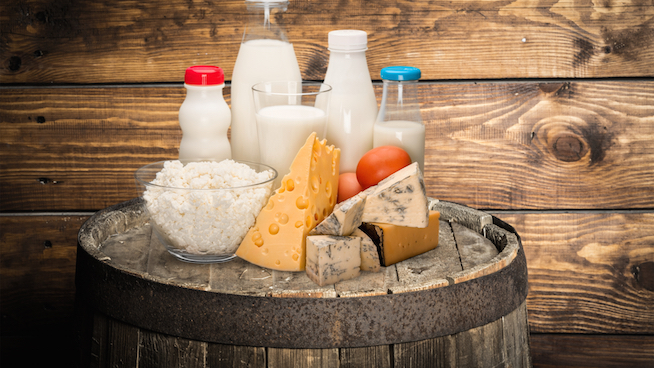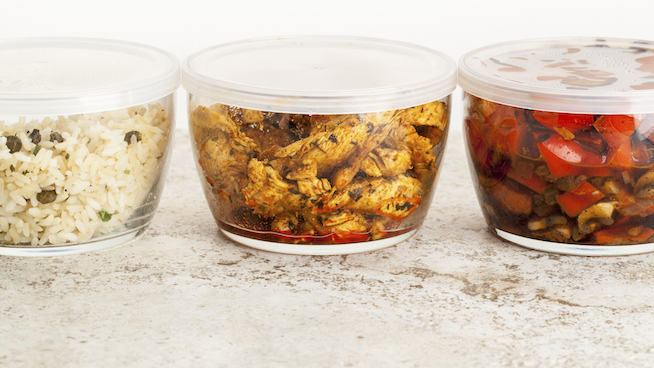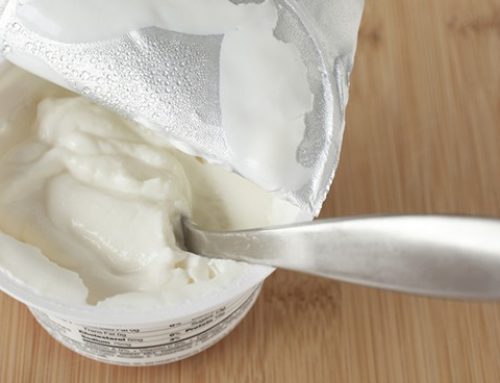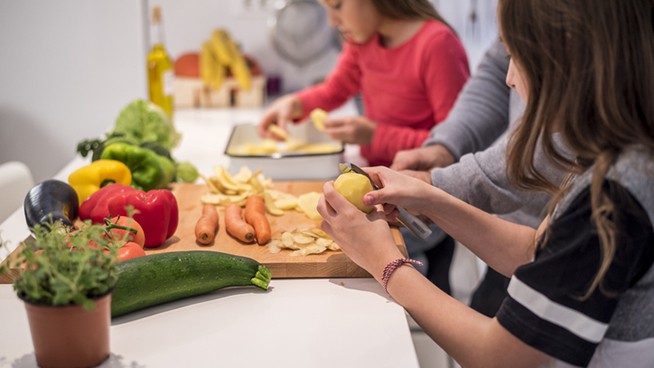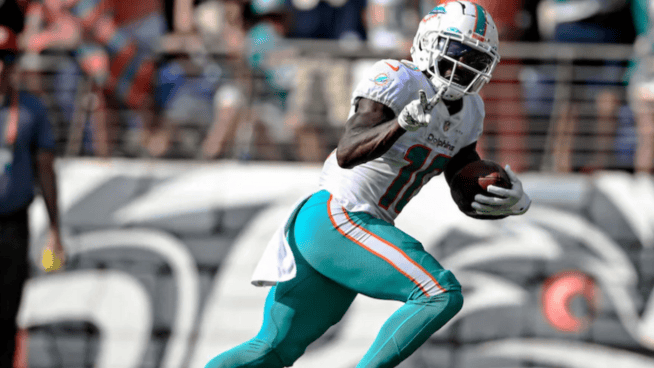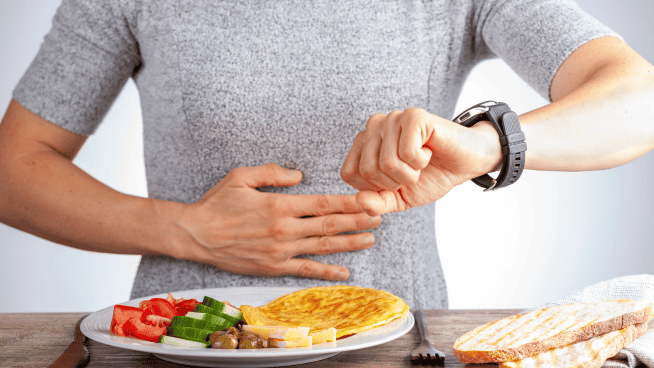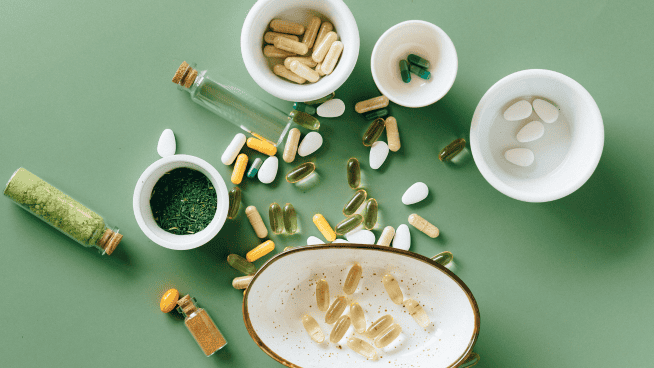Small Forks Make You Eat More, and 4 Other Ways Utensils Affect Your Intake
There have been innumerable studies of the foods we eat and the effects they have on our bodies, but until recently no one seemed too concerned with how the things we use to eat that food affect us. A growing body of research indicates that the forks, plates and other utensils we use to consume our food can have a powerful impact on how much we eat and how satisfying we perceive it to be.
The shapes, sizes and colors of those items can play tricks on our brains that affect our overall consumption. Here are five examples:
Small Dishes Help You Eat Less
If you’re looking for an easy way to eat less food, you can start by using smaller plates and bowls.
A 2006 study found that people who were given large bowls ended up serving themselves and consuming 16% more cereal than those who were given small bowls. After they ate, members of both groups were asked to estimate how much cereal they had consumed. Members of the large bowl group estimated they ate 7% less than what members of the small bowl group estimated. Amazingly, the large bowl group ate more but believed they ate less.
The Cornell University Food and Brand Lab (CUFBL) wrote a statement on the study that said its findings confirm that “not only could large dinnerware cause us to serve and eat more; it can do so without us noticing and trick us into believing we have eaten less.”
A 2013 study backed up this theory when it found that diners at a Chinese buffet who used large plates ate 45% more food on average than those who used smaller plates.
One reason for this phenomenon is an optical illusion known as the Delboeuf illusion. If you take two dots of identical size and shape and surround one with a large circle and the other with a small circle, the dot surrounded by the small circle will actually appear to be bigger and the dot surrounded by the large circle.
Since meals served on smaller dinnerware appear bigger, they can trick your brain into believing you are consuming more food than you actually are. And since meals served on large plates can appear smaller, they can trick your brain into believing you are consuming less food than you actually are.
The takeaway?
Use small plates and bowls for calorie-dense foods and larger plates and bowls for foods you want to eat more of. Cornell’s researchers advise that “healthy foods such as fresh vegetables should be served on larger plates to encourage consumption, while less-healthy foods should be served from smaller plates to trick our sweet tooth into feeling satisfied with less.”
RELATED: Don’t Get Tricked by These 6 Foods with Wildly Unrealistic Serving Sizes
Use a Big Fork to Cut Calories
Whereas large plates and bowls have been found to promote overeating, the opposite is true of forks.
A 2011 study in the Journal of Consumer Research looked at how fork size can affect eating habits. The study was conducted in an Italian restaurant, and participants were seated at tables with either large forks or small forks. The large forks held 20% more food than an average-sized restaurant fork while the small forks held 20% less.
To analyze how much food each participant ate, their plates were weighed before and after the meals. At the end of the study, the researchers found participants who ate with larger forks left significantly more food on their plates than those who ate with smaller forks, leaving an average of 7.91 ounces of food compared to 4.43 ounces. Those who ate with larger forks became satisfied quicker and ate less than those who ate with smaller forks.
The study’s authors concluded that “when people have a well-defined hunger goal to satisfy and put forth effort to reach the goal, they consume more from a small fork rather than from a large fork. The bite size becomes the medium that helps them satisfy their goal and also influences quantity consumed. The small fork gives a feeling that they are not making much progress in satiating their hunger, which results in more consumption compared to when they have a large fork.”
As with plate sizes, you can use this to your advantage by using a big fork when you’re trying to limit your overall consumption of a food and a small fork when you’re looking to load up on something nutritious.
Pick Your Plate Color Wisely
We’ve already established that eating from a large plate can lead to overeating. But it’s not just the size of the plate that matters—it’s the color, too.
A 2012 study published in the Journal of Consumer Research looked at how plate color can affect the amount of food people place on their plates when self-serving. In a buffet setting, participants were randomly assigned either a white plate or a red plate. The food options consisted of two types of pasta—one with Alfredo sauce and one with tomato sauce. As you know, Alfredo sauce is white and tomato sauce is red. The study’s authors found the participants who had low contrast between the food they picked and the plates they used served themselves significantly more food.
The CUFBL outlined the findings of the study in a statement on their website: “Participants who had low contrast between their food and the plates they served themselves on, for example pasta with Alfredo sauce on a white plate or pasta with tomato sauce on a red plate, served themselves 22 percent—or 32 grams—more pasta than participants with high contrast between their food and the plate they served themselves on.”
The amount of food you serve yourself has a gigantic impact on how much you actually eat. A 2015 study found that in an average self-served meal, 92 percent of all self-served food is subsequently eaten. That means that if you serve yourself more food, the odds are you’ll eat more of it. “Adults consistently consume the vast majority of what they serve themselves,” the studies’ authors wrote.
Like plate sizes, you can use this phenomenon to your advantage by changing your plate color based on the situation. The CUFBL advises that if your goal is to eat less of a given food, select a plate that has a high contrast with that item. If you’re trying to eat more of something, select a plate that matches the color of the food. Serving yourself green beans on a green plate, for example, could lead you to up your portion and ultimately consume more of them.
Switch Hands to Cut Down on Snack Food
Our hands are the original eating utensils. Although we like to think we’ve evolved since our caveman days, we still use our hands to grub on many items, among them chips, pretzels, trail mix, candy, burritos, bagels and sandwiches. And just like other food utensils, the way we use your hands can affect how much we eat.
A 2011 study published in the journal Personality and Social Psychology Bulletin found that using your non-dominant hand to eat a snack food can help you control your consumption and cut down your total caloric intake. For the study, the researchers gathered participants in a movie theater and provided them with popcorn. They could eat as much or as little as they wanted. Half of the group was told to eat the popcorn as they normally would, while the other half was told to eat the popcorn with their non-dominant hand.
The researchers found those who ate with their non-dominant hands consumed about 30 percent less than those who ate with their dominant hands. Eating with your non-dominant hand helps prevent mindless eating, which is the practice of eating food without paying attention to how much you are eating. “If people disrupt the physical sequence of action that is in automatic eating, that’s one way to gain some control,” said study author David Neal.
RELATED: 5 Ways to Make Junk Food Less Junky
Put Cold Beverages in Blue Containers, Hot Ones in Red
Red and blue have long been universal signals for hot and cold. Interestingly enough, it seems our brains associate these colors and temperatures so closely that they can change how we taste beverages.
A 2003 study found that a cold beverage served in a blue glass was rated significantly more thirst-quenching than the same drink served in a green, red or yellow glass. Nearly 50 percent of participants found drinking from the blue glass to be the most thirst-quenching experience. Researchers indicated that the association between the color blue and the sensory quality of coldness is what likely made the beverage seem more refreshing to participants when it was served in blue cups, even though the liquid was the same temperature in each glass.
A 2012 study found that coffee served in a red cup was rated significantly warmer than the same temperature coffee served in a yellow, green or blue cup. Nearly 40 percent of participants concluded that the coffee in the red cup was the hottest beverage of the four, even though the temperature was the same in each container.
It’s hard to say if this phenomenon can be used as a nutritional strategy, but it can be used to enhance a beverage drinking experience. If you’re looking to quench your thirst, go for a blue-colored cup, glass or mug. If you’re looking to cozy up with a hot beverage, choose a red-colored cup, glass or mug.
RECOMMENDED FOR YOU
MOST POPULAR
Small Forks Make You Eat More, and 4 Other Ways Utensils Affect Your Intake
There have been innumerable studies of the foods we eat and the effects they have on our bodies, but until recently no one seemed too concerned with how the things we use to eat that food affect us. A growing body of research indicates that the forks, plates and other utensils we use to consume our food can have a powerful impact on how much we eat and how satisfying we perceive it to be.
The shapes, sizes and colors of those items can play tricks on our brains that affect our overall consumption. Here are five examples:
Small Dishes Help You Eat Less
If you’re looking for an easy way to eat less food, you can start by using smaller plates and bowls.
A 2006 study found that people who were given large bowls ended up serving themselves and consuming 16% more cereal than those who were given small bowls. After they ate, members of both groups were asked to estimate how much cereal they had consumed. Members of the large bowl group estimated they ate 7% less than what members of the small bowl group estimated. Amazingly, the large bowl group ate more but believed they ate less.
The Cornell University Food and Brand Lab (CUFBL) wrote a statement on the study that said its findings confirm that “not only could large dinnerware cause us to serve and eat more; it can do so without us noticing and trick us into believing we have eaten less.”
A 2013 study backed up this theory when it found that diners at a Chinese buffet who used large plates ate 45% more food on average than those who used smaller plates.
One reason for this phenomenon is an optical illusion known as the Delboeuf illusion. If you take two dots of identical size and shape and surround one with a large circle and the other with a small circle, the dot surrounded by the small circle will actually appear to be bigger and the dot surrounded by the large circle.
Since meals served on smaller dinnerware appear bigger, they can trick your brain into believing you are consuming more food than you actually are. And since meals served on large plates can appear smaller, they can trick your brain into believing you are consuming less food than you actually are.
The takeaway?
Use small plates and bowls for calorie-dense foods and larger plates and bowls for foods you want to eat more of. Cornell’s researchers advise that “healthy foods such as fresh vegetables should be served on larger plates to encourage consumption, while less-healthy foods should be served from smaller plates to trick our sweet tooth into feeling satisfied with less.”
RELATED: Don’t Get Tricked by These 6 Foods with Wildly Unrealistic Serving Sizes
Use a Big Fork to Cut Calories
Whereas large plates and bowls have been found to promote overeating, the opposite is true of forks.
A 2011 study in the Journal of Consumer Research looked at how fork size can affect eating habits. The study was conducted in an Italian restaurant, and participants were seated at tables with either large forks or small forks. The large forks held 20% more food than an average-sized restaurant fork while the small forks held 20% less.
To analyze how much food each participant ate, their plates were weighed before and after the meals. At the end of the study, the researchers found participants who ate with larger forks left significantly more food on their plates than those who ate with smaller forks, leaving an average of 7.91 ounces of food compared to 4.43 ounces. Those who ate with larger forks became satisfied quicker and ate less than those who ate with smaller forks.
The study’s authors concluded that “when people have a well-defined hunger goal to satisfy and put forth effort to reach the goal, they consume more from a small fork rather than from a large fork. The bite size becomes the medium that helps them satisfy their goal and also influences quantity consumed. The small fork gives a feeling that they are not making much progress in satiating their hunger, which results in more consumption compared to when they have a large fork.”
As with plate sizes, you can use this to your advantage by using a big fork when you’re trying to limit your overall consumption of a food and a small fork when you’re looking to load up on something nutritious.
Pick Your Plate Color Wisely
We’ve already established that eating from a large plate can lead to overeating. But it’s not just the size of the plate that matters—it’s the color, too.
A 2012 study published in the Journal of Consumer Research looked at how plate color can affect the amount of food people place on their plates when self-serving. In a buffet setting, participants were randomly assigned either a white plate or a red plate. The food options consisted of two types of pasta—one with Alfredo sauce and one with tomato sauce. As you know, Alfredo sauce is white and tomato sauce is red. The study’s authors found the participants who had low contrast between the food they picked and the plates they used served themselves significantly more food.
The CUFBL outlined the findings of the study in a statement on their website: “Participants who had low contrast between their food and the plates they served themselves on, for example pasta with Alfredo sauce on a white plate or pasta with tomato sauce on a red plate, served themselves 22 percent—or 32 grams—more pasta than participants with high contrast between their food and the plate they served themselves on.”
The amount of food you serve yourself has a gigantic impact on how much you actually eat. A 2015 study found that in an average self-served meal, 92 percent of all self-served food is subsequently eaten. That means that if you serve yourself more food, the odds are you’ll eat more of it. “Adults consistently consume the vast majority of what they serve themselves,” the studies’ authors wrote.
Like plate sizes, you can use this phenomenon to your advantage by changing your plate color based on the situation. The CUFBL advises that if your goal is to eat less of a given food, select a plate that has a high contrast with that item. If you’re trying to eat more of something, select a plate that matches the color of the food. Serving yourself green beans on a green plate, for example, could lead you to up your portion and ultimately consume more of them.
Switch Hands to Cut Down on Snack Food
Our hands are the original eating utensils. Although we like to think we’ve evolved since our caveman days, we still use our hands to grub on many items, among them chips, pretzels, trail mix, candy, burritos, bagels and sandwiches. And just like other food utensils, the way we use your hands can affect how much we eat.
A 2011 study published in the journal Personality and Social Psychology Bulletin found that using your non-dominant hand to eat a snack food can help you control your consumption and cut down your total caloric intake. For the study, the researchers gathered participants in a movie theater and provided them with popcorn. They could eat as much or as little as they wanted. Half of the group was told to eat the popcorn as they normally would, while the other half was told to eat the popcorn with their non-dominant hand.
The researchers found those who ate with their non-dominant hands consumed about 30 percent less than those who ate with their dominant hands. Eating with your non-dominant hand helps prevent mindless eating, which is the practice of eating food without paying attention to how much you are eating. “If people disrupt the physical sequence of action that is in automatic eating, that’s one way to gain some control,” said study author David Neal.
RELATED: 5 Ways to Make Junk Food Less Junky
Put Cold Beverages in Blue Containers, Hot Ones in Red
Red and blue have long been universal signals for hot and cold. Interestingly enough, it seems our brains associate these colors and temperatures so closely that they can change how we taste beverages.
A 2003 study found that a cold beverage served in a blue glass was rated significantly more thirst-quenching than the same drink served in a green, red or yellow glass. Nearly 50 percent of participants found drinking from the blue glass to be the most thirst-quenching experience. Researchers indicated that the association between the color blue and the sensory quality of coldness is what likely made the beverage seem more refreshing to participants when it was served in blue cups, even though the liquid was the same temperature in each glass.
A 2012 study found that coffee served in a red cup was rated significantly warmer than the same temperature coffee served in a yellow, green or blue cup. Nearly 40 percent of participants concluded that the coffee in the red cup was the hottest beverage of the four, even though the temperature was the same in each container.
It’s hard to say if this phenomenon can be used as a nutritional strategy, but it can be used to enhance a beverage drinking experience. If you’re looking to quench your thirst, go for a blue-colored cup, glass or mug. If you’re looking to cozy up with a hot beverage, choose a red-colored cup, glass or mug.






